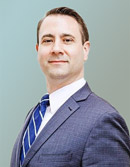Below you will find a real life case study of a couple who are looking for financial advice on how best to arrange their financial affairs. Their names and details have been changed to protect their identity. The Globe and Mail often seeks the advice of our VP, Wealth Advisor, Matthew Ardrey, to review and analyze the situation and then provide his solutions to the participants.
![]()
Written by:
Special to The Globe and Mail
Published April 10, 2020

Robert and Rachel have worked hard, raised three children and – thanks to high income and frugal living – amassed an impressive portfolio of dividend-paying stocks, which they manage themselves. When they approached Financial Facelift in February, their combined investments were worth about $2.7-million.
After the coronavirus tore through financial markets last month, their holdings tumbled to a little more than $1.8-million by late March, a drop of roughly $900,000, or 33 per cent. Markets have since bounced but are still well below their February highs.
“The recent market downturn caught us by surprise,” Robert acknowledges in an e-mail, “but we are hoping we can weather the storm.”
Robert, a self-employed consultant, is 57. Rachel, who works in management, is 52. Together they brought in about $285,000 last year, although Robert’s income prospects for this year are uncertain. They have three children, ranging in age from 9 to 19.
“We feel burned out,” Robert writes, “but we have no company pensions or other safety blankets. Can we retire now?”
Leading up to retirement, the couple want to do some renovations costing $100,000 and take up recreational flying, which they estimate will cost about $150,000. Their goal is to quit working in three years with a budget of $100,000 a year after tax. Can they still do it?
We asked Matthew Ardrey, a vice-president and financial planner at TriDelta Financial in Toronto, to look at Robert and Rachel’s situation.
What the expert says
“The rapid decline and subsequent volatility of their investments is a result of how they are investing,” Mr. Ardrey says. Their portfolio is 85 per cent common stocks and 15 per cent preferred shares, the planner notes. “Of the common stock, about 90 per cent is Canadian. This lack of diversification in their investment strategy will affect their retirement plans.”
For the first quarter, major stock markets were down more than 20 per cent, he says. “The fixed-income universe in Canada was up 1.56 per cent for the quarter.” Having some fixed-income securities “would have mitigated the couple’s losses.”
In preparing his forecast, Mr. Ardrey weighs some different situations. He assumes their investment returns from this point forward equal the long-term average for this type of portfolio of 6.25 per cent. This rate of return continues until they retire from work in three-and-a-half years.
When Robert and Rachel retire, the planner assumes they reduce their exposure to stocks and switch to a balanced portfolio of 60 per cent stocks and 40 per cent bonds. This would give them a return of 4.5 per cent. “From there we can compare how much impact this market decline had on their portfolio.”
Their original $2.7-million would have given them a net worth at Rachel’s age 90 of $10-million, adjusted for inflation, including their residence and rental property valued at $5.4-million, Mr. Ardrey says. If they chose to spend all of their investments, leaving the real estate for their children, they could have increased their spending from $100,000 a year to $136,000, adjusted for inflation, giving them a comfortable buffer.
With their current portfolio – about $2.2-million as of April 6 – they would have a net worth of $8.4-million at Rachel’s age 90, including $5.4-million in real estate. They would have the option of increasing their spending to $118,000 a year. “This is half of their former buffer, which is a significant difference,” Mr. Ardrey says.
Even if the markets returned double the couple’s historical rate of return, or 12.5 per cent, from now until they retire, “it would still not make up all of the difference of what they have lost,” the planner says. Their net worth at Rachel’s age 90 would be $9.5-million and they could increase their spending to $130,000.
This market downturn speaks to the value of a balanced, diversified portfolio and professional money management, Mr. Ardrey says. “In so many cases, people try to invest on their own without truly understanding their ability to tolerate risk, or without a financial plan in place” to help them understand the implications of market returns on their retirement.
He recommends Robert and Rachel gradually shift to a professionally managed portfolio that includes both large-capitalization stocks with strong dividends, diversified geographically, and a fixed-income component comprising corporate and government bonds. This strategy could be supplemented with some private income funds – which do not trade on financial markets – to stabilize their returns and potentially enhance their income.
By making this change, they could increase their rate of return in retirement from 4.5 per cent to 5.5 per cent, giving them an additional financial cushion of $12,000 a year. “This would be especially beneficial if markets take a long time to return to their former highs,” Mr. Ardrey says.
The plan assumes Robert will get 85 per cent of Canada Pension Plan benefits and Rachel 75 per cent, starting at age 65. They will both get full Old Age Security benefits.
Fortunately, this couple have ample resources, including real estate, that they can use to insulate themselves against unexpected expenses, Mr. Ardrey says. Many other Canadians who have been investing in the same manner do not. Worse, many investors may have other financial stresses such as a lost job or mounting debts that could force them to liquidate their portfolio at an inopportune time, the planner says.
“What the past month has shown is that there are significant risks to do-it-yourself investing and not having a proper asset mix in place – especially as you approach retirement.”
Client situation
The people: Robert, 57, Rachel, 52, and their three children.
The problem: Can they retire in about three years without jeopardizing their financial security?
The plan: Retire as planned but take steps to draw up a proper financial plan that includes a more balanced investment strategy.
The payoff: Lowering potential investment risk to better achieve goals.
Monthly net income: $16,720
Assets: Cash $32,875; stocks $589,775; capital in his small business corporation $157,080; her TFSA $82,220; his TFSA $57,035; her RRSP $446,145; his RRSP $621,755; her locked-in retirement account from previous employer $76,405; his LIRA from previous employer $184,825; registered education savings plan $81,260; residence $1,800,000; recreational property $650,000. Total: $4.78-million
Monthly outlays: (including recreational property): Property tax $1,215; home insurance $125; utilities $495; maintenance $240; transportation $650; groceries $1,105; clothing $435; gifts $215; vacation, travel $325; dining out, entertainment $385; pets $45; sports, hobbies $625; piano lessons $160; other personal $415; doctors, dentists $200; prescriptions $70; phones, TV, internet $140; RRSPs $1,830; RESP $630; TFSA $915; savings to taxable accounts $7,460. Total: $17,680.
Liabilities: None
Want a free financial facelift? E-mail finfacelift@gmail.com.
Some details may be changed to protect the privacy of the persons profiled.

